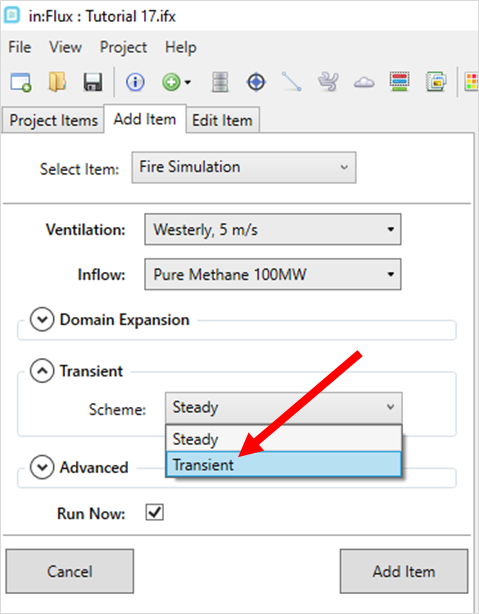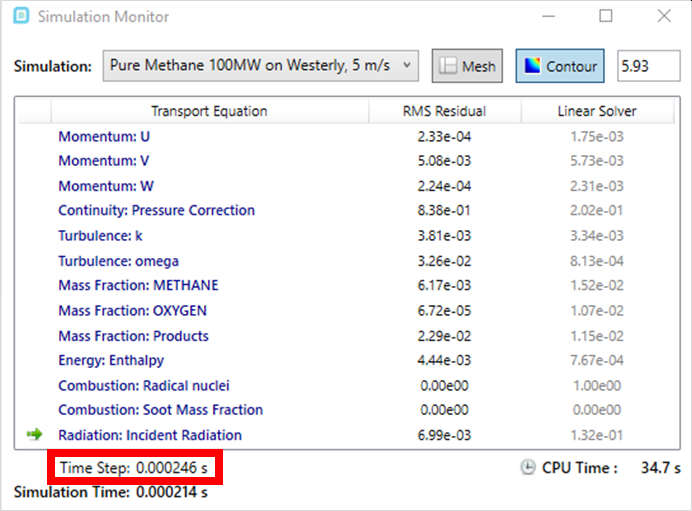Setting Up a Transient Fire Simulation
Load your saved Tutorial 15 file into in:Flux before continuing. If any visualizations or other project items (such as monitor points) are showing, turn off their visibility by deselecting the checkboxes next to their name in the Project Items Tab.
This section will define a transient simulation of the existing inflow and ventilation case.
-
From the Add Item tab, select Fire Simulation from the Select Item: dropdown menu.
-
Tutorial 15 only has one ventilation simulation so the Westerly, 5 m/s should already be selected as the Ventilation case
-
For the Inflow ensure the Pure Methane 100MW case is selected
-
Click the Transient text to expand the panel and change the Scheme option to Transient

Tutorial 17 - Figure 01 - changing the Scheme of the simulation to transient when defining a fire simulation
-
In the Duration textbox enter a value of "30" seconds. This means that the simulation will simulate a duration of 30 seconds.
-
Set the Save Results option to Every 1 second. You may opt for other options here, note that the file size will be affect by how much data is stored for each case.
-
Ensure the Run Now checkbox is selected and click Add Item.
The transient fire case will now be listed in the Project Items tab under the fire simulations section with a small timer icon next to the flame icon (![]() ) to indicate that the case is transient.
) to indicate that the case is transient.
Once initialized, you can open the Simulation Monitor and see what time step is currently being calculated, and how much time has been simulated. The time step is the division of time that the simulation progresses at each time-iteration. The time step is initially small and calculated from the Courant number of 1. It then adaptively increases at each time-iteration until a maximum is reached.

Tutorial 17 - Figure 02 - indication of time step in the simulation monitor
While the simulation is running continue to the next section to define an inflow with a shutdown time (ESD).
Note that in:Flux transient simulations tend to take about 1.5x times longer than steady state simulations this is applicable to both dispersion and fire cases.